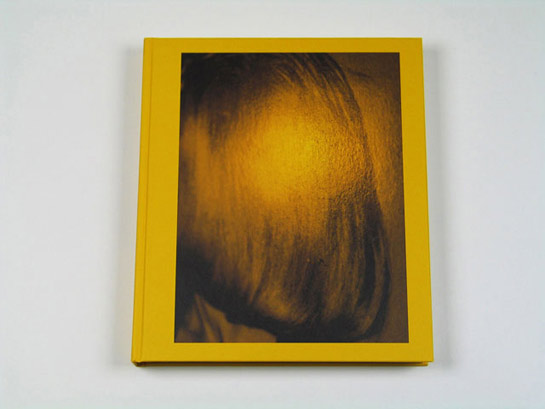Review: Dirk Braeckman

How do you write about a book like Dirk Braeckman? Ideally, I’d simply show you the book, in person (doing it online has its limits, after all; you can also go to the artist’s website). That’s how I came across this book. It was a recommendation by a friend, who happened to bring the book to a class we taught together. I was instantly hooked. The problem is going to be to explain why I was - and still am - hooked. (more)
Maybe a good way to start this would be to note that a good photobook should contain good photographs, and that’s the case here. The photographs in this book are exquisite. Seeing them online does not come very close to seeing them printed on paper. That’s a truism, of course, a cliche even. But if there is any book for which this case has to be made it’s this one.
Mind you, these photographs might not be your cup of tea, in which case you might wonder how I could possibly say they’re exquisite. But that would be one of those internet-style discussions that are somewhat pointless: Something can be exquisite and not be one’s cup of tea at the same time.
Anyway, Dirk Braeckman is also printed very well, and that is key to the experience. If the photographs were reproduced badly this would be a terrible book. If you look at the images in, say, Metropolis (on the artist’s website) you’ll notice than even on a computer screen, those photographs seem to have a curious depth. This is not black-and-white photography, it’s grey-scale photography, with the shades of grey often only very slowly and gradually changing. I suppose a good way to describe the effect of the photographs in the book is to say that because of their tonal qualities there’s a photographic space. You’re looking at a two-dimensional image, printed on paper, but it makes you feel you’re looking at something that has an added, third, dimension.
Most of Braeckman’s photographs are in fact photographs of actual spaces - interiors, many of which look like hotel rooms (it’s never quite so clear). So there are two kinds of spaces here: The ones depicted, and the one that is being created photographically. When looking at these photographs you will find yourself reacting to both, or maybe more accurately to how the photographer made the two interact. Needless to say, you might wonder whether the two spaces aren’t simply the same thing. What’s the point of photography if the representation of a space has a different feel than the space itself? Well, what’s the point of photography?
But there are also surfaces. The pages of the book are obviously a surface. You look at the photographs, and even though they give you the feeling there is a space you can look into, you can’t physically enter that space (that’s hardly a mind-blowing observation). Much has been made in the history of writing about photography about that fact. Here, the game gets somewhat more complex since the photographer also produced photographs of other images or photographs, often in such a way that you realize you’re looking at just that. So you’re constantly reminded - albeit not in an intellectual way - that while you feel as if you could enter that world in reality you can’t because it’s not there. It just on the paper. It’s just a photograph.
This might sound like one of those intellectual exercises theorists love so much. However, I am pretty confident that even if you don’t care about photography theory at all you will experience this yourself when you look at these photographs. It’s quite amazing actually. Someone - the photographer - will be messing with your mind in ways that occasionally are unsettling. It’s a bit like looking into a little lake filled with muddy water when the sun is setting. You see things, or you think you see things, and you don’t.
Whether any of this makes sense to you I don’t know. I hope it will make at least a little sense. Ideally, it will make you curious enough to look at the book. Dirk Braeckman is one of the most engaging photobooks I’ve seen in a long time. Highly recommended.
Dirk Braeckman, photographs by Dirk Braeckman, essays by Dirk Lauwaert and Martin German, 400 pages, Roma Publications, 2011
(find my presentation of the book here)